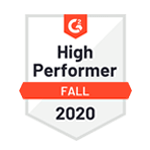In today’s fiercely competitive job market, finding and attracting the right talent has become more challenging than ever. Traditional methods of recruitment often result in a passive approach, where companies wait for candidates to come to them. However, proactive recruitment strategies are rapidly gaining popularity as a way to gain a competitive edge. By taking a proactive approach, companies can actively seek out and engage with potential candidates, ensuring a higher quality pool of applicants. In this article, we will explore the concept of proactive recruitment strategies and provide practical tips to implement them effectively.
What is Proactive Recruitment?
Proactive recruitment, also known as proactive sourcing or proactive talent acquisition, is an approach that involves actively searching and engaging with potential candidates before a job opening becomes available. Unlike reactive recruitment, which involves advertising job openings and waiting for applications, proactive recruitment allows companies to build relationships with potential candidates, creating a talent pipeline for future needs.
Proactive Recruitment Strategies: What Are They?
Before diving into the specifics, let’s understand what proactive recruitment strategies entail. Proactive recruitment involves actively seeking out potential candidates instead of relying solely on inbound applications. It focuses on building and nurturing talent pools, leveraging networks, and creating a strong employer brand to attract top talent. Instead of waiting for a position to open up, proactive recruiters identify talent in advance, allowing for a quicker and more efficient hiring process.
Defining Proactive Recruitment Strategies
Proactive recruitment strategies involve taking a proactive approach to talent acquisition, focusing on identifying, engaging, and building relationships with potential candidates before the need for a specific role arises. It involves anticipating future talent needs and developing a talent pool of qualified individuals to tap into when the time is right.
The Core Principles of Proactive Recruitment Strategies
Proactive recruitment strategies are built on the following key principles:
1. Continuous Talent Sourcing
Instead of waiting for job openings, proactive recruitment involves ongoing talent sourcing activities to identify potential candidates who align with the organization’s values and requirements.
2. Candidate Relationship Management
Building and nurturing relationships with potential candidates over time, even if there are no immediate job openings, helps establish a talent pipeline for future hiring needs.
3. Employer Branding
Proactive recruitment strategies emphasize showcasing the organization’s culture, values, and benefits to create a strong employer brand that attracts top talent.
4. Data-Driven Decision Making
Utilizing data and analytics to identify talent trends, skill gaps, and candidate preferences enables organizations to make informed recruitment decisions.
5. Internal Mobility
Proactive recruitment extends beyond external candidates and includes identifying and developing existing employees for potential future roles within the organization.
Why Proactive Recruitment Strategies Matter?
In today’s candidate-driven market, the battle for top talent is fierce. By embracing proactive recruitment strategies, companies gain several advantages:
Access to Passive Candidates
Passive candidates, those who are not actively looking for a job, often make up a significant portion of the talent pool. Proactive recruitment strategies enable you to tap into this often untapped resource, giving you access to a wider range of highly qualified candidates.
In a competitive job market, many talented individuals may not actively seek new opportunities. They may be content in their current positions or simply unaware of better options. However, these passive candidates can be a valuable asset to your organization if you can engage with them effectively.
Proactive recruitment strategies involve reaching out to passive candidates through various channels such as social media, professional networks, and referrals. By taking the initiative to connect with these individuals, you can uncover hidden talent and expand your candidate pool significantly.
Reduced Time to Hire
With a proactive approach to recruitment, you can build a talent pipeline in advance. When a position becomes available, you already have a pool of potential candidates to draw from, reducing the time it takes to fill the vacancy.
Traditional reactive recruitment methods often result in a rush to find suitable candidates when a position opens up. This can lead to hasty decisions and settling for candidates who may not be the best fit for the role or the company. By proactively sourcing and nurturing relationships with potential candidates, you can minimize the time spent on sourcing and screening when a job opening arises.
A well-established talent pipeline allows you to move swiftly through the hiring process, ensuring a shorter time to hire. This can be particularly advantageous when filling critical roles or positions that require specific skill sets that are in high demand.
Higher Quality Hires
By actively sourcing candidates, you have the opportunity to evaluate their skills, experience, and cultural fit before they even apply. This leads to higher quality hires and lower turnover rates.
When you rely solely on reactive recruitment methods, you may receive a large volume of applications from candidates who are actively seeking a job. While some of these applicants may be a good fit, many might not meet your specific requirements. Sorting through a large pool of applicants can be time-consuming and may meet your desired criteria and qualifications. You can actively seek out candidates who possess the skills, experience, and cultural fit that align with your organization’s values and goals.
By evaluating candidates before they apply, you can save time and resources by focusing on individuals who have a higher likelihood of being a good fit for the position and the company. This leads to higher quality hires who are more likely to succeed in their roles and contribute to the overall success of the organization.
Furthermore, proactive recruitment strategies give you the opportunity to engage with candidates on a deeper level. You can have meaningful conversations, conduct informal interviews, and assess their potential fit within your company’s culture. This comprehensive evaluation process helps to ensure that you hire candidates who not only have the necessary skills but also align with your company’s values and work environment.
By making quality hires, you can significantly reduce turnover rates. When you invest time and effort in finding the right candidates, you increase the chances of them staying with your organization for the long term. This leads to improved employee retention, increased productivity, and reduced costs associated with recruitment and training.
Improved Employer Brand
Implementing proactive recruitment strategies enhances your company’s reputation as an employer of choice. It demonstrates that you value talent and are committed to building relationships with potential candidates.
In today’s digital age, candidates have access to a wealth of information about companies and their work cultures. They rely on platforms like Glassdoor, social media, and online communities to gather insights about the organizations they are interested in. Your employer brand plays a crucial role in attracting top talent.
Proactive recruitment allows you to engage with candidates even before they start their job search. By showcasing your company’s values, mission, and unique opportunities, you can create a positive impression and establish your brand as an employer of choice. This proactive approach helps to differentiate your organization from competitors and attract highly qualified candidates who are eager to work for you.
When candidates have positive experiences with your proactive recruitment efforts, they are more likely to share their experiences with others. Word-of-mouth referrals and positive reviews can significantly impact your employer brand and attract a larger pool of qualified candidates.
Proactive Recruiting vs Reactive Recruiting
In the realm of talent acquisition, proactive recruiting and reactive recruiting represent two distinct approaches. Let’s delve into each of these approaches and understand their implications for organizations:
Proactive Recruiting: The Art of Anticipation
Proactive recruiting involves a forward-thinking approach, where organizations anticipate their talent needs and take strategic initiatives to attract and engage potential candidates before specific job openings arise. It goes beyond simply filling immediate vacancies and focuses on building a talent pipeline for future requirements.
By adopting a proactive recruiting strategy, organizations gain a competitive edge by identifying and nurturing relationships with high-potential candidates. This approach allows companies to build a strong employer brand, establish long-term talent partnerships, and tap into a wider pool of qualified candidates.
Reactive Recruiting: Playing Catch-Up
On the other hand, reactive recruiting is a more traditional approach that involves responding to immediate hiring needs as they arise. It relies on posting job ads, reviewing applications, and conducting interviews once a position becomes vacant. This reactive approach often leads to rushed decisions, limited candidate choices, and missed opportunities to attract top talent.
While reactive recruiting may be suitable for urgent hiring requirements, it fails to provide organizations with a strategic advantage in the long run. It can result in a constant cycle of talent gaps, increased time-to-hire, and higher turnover rates.
Proactive Recruitment Strategies: How to Implement Them
Now that we understand the significance of proactive recruitment strategies, let’s explore some actionable steps to implement them effectively:
1. Build a Talent Pool
• Leverage Social Media
In addition to LinkedIn, explore other social media platforms like Twitter and Facebook to connect with professionals in your industry. Share industry news, insights, and job openings to attract potential candidates and build your network.
• Attend Networking Events
Make the most of industry conferences, trade shows, and professional association events to meet professionals face-to-face. Engage in meaningful conversations, exchange contact information, and follow up afterward to strengthen your connections.
• Engage with Professional Communities
Join relevant online forums, discussion boards, and industry-specific groups to engage with professionals actively discussing industry trends and topics. Contribute valuable insights and build relationships with potential candidates.
2. Develop Relationships with Passive Candidates
• Personalized Outreach
Craft personalized messages when reaching out to passive candidates. Highlight their specific skills and achievements, and explain how their expertise aligns with your organization’s goals and values. Show genuine interest in their career aspirations to pique their curiosity.
• Provide Value
Offer valuable content through blog posts, webinars, or e-books. Share industry insights, career development tips, or success stories from your organization. By providing valuable information, you can establish yourself as a trusted resource and keep passive candidates engaged.
3. Enhance Your Employer Brand and Employee Value Proposition
• Craft an Authentic Employer Brand
Clearly define your company’s unique culture, values, and mission. Ensure consistency in communicating your brand across all channels, including your website, social media profiles, and job descriptions. Highlight your company’s personality and emphasize what differentiates you from competitors.
• Showcase Employee Benefits and Growth Opportunities
Clearly articulate the benefits and growth opportunities your organization offers. Highlight factors such as career development programs, mentorship opportunities, flexible work arrangements, and comprehensive employee benefits packages. Use employee testimonials and success stories to demonstrate the value employees receive.
4. Utilize Employee Referrals
• Implement a Structured Referral Program
Develop a well-defined employee referral program that incentivizes employees to refer qualified candidates. Clearly communicate the program details, including the referral process, eligibility criteria, and rewards. Recognize and reward employees who refer successful hires promptly.
5. Collaborate with Universities and Educational Institutions
• Internship Programs
Establish internship or co-op programs to attract talented students. Offer meaningful work experiences and mentorship opportunities to nurture their skills and build a pipeline of potential hires. Provide structured feedback and evaluation to help interns develop professionally.
• Campus Recruitment
Engage with universities and educational institutions by participating in career fairs, job fairs, and campus events. Conduct on-campus interviews and presentations to raise awareness about your organization and available opportunities. Build relationships with faculty and career services to gain access to top talent.
6. Leverage Technology and Data
• Applicant Tracking Systems (ATS)
Implement an ATS to streamline and automate the recruitment process. An ATS can help you track candidates, store resumes and applications, and facilitate communication with candidates. It can also generate reports and analytics to assess the effectiveness of your recruitment efforts.
• Data Analytics
Utilize data analytics to gain insights into recruitment metrics, such as time-to-hire, cost-per-hire, and source-of-hire. Analyze the data to identify bottlenecks in the recruitment process and optimize your strategies accordingly. Use data to make data-driven decisions and continuously improve your recruitment efforts.
7. Develop an Employee Ambassador Program
Empower your employees to become ambassadors for your organization by actively promoting your employer brand. Encourage them to share their positive experiences and engage with potential candidates on social media platforms. Provide training and resources to help them effectively represent your company and attract top talent.
8. Build Relationships with Industry Influencers
Identify influential individuals within your industry, such as thought leaders, bloggers, or industry experts. Engage with them through social media, attend their events, and collaborate on content or projects. By building relationships with industry influencers, you can expand your reach and gain access to their networks, increasing your chances of connecting with potential candidates.
9. Utilize Talent Acquisition Software
Invest in talent acquisition software that goes beyond an applicant tracking system. Look for tools that offer features such as candidate relationship management (CRM), social media sourcing, and advanced analytics. These tools can help you streamline your proactive recruitment efforts, manage candidate relationships, and track the effectiveness of your strategies.
10. Conduct Targeted Email Campaigns
Leverage your talent pool and engage with potential candidates through targeted email campaigns. Segment your talent pool based on skills, experience, and interests, and tailor your messages accordingly. Share relevant job openings, industry insights, and personalized content to keep candidates engaged and build relationships over time.
11. Offer Virtual Events and Webinars
Incorporate virtual events and webinars into your recruitment strategy. Host webinars on topics relevant to your industry and invite potential candidates to attend. This provides an opportunity to showcase your expertise, engage with the audience, and attract individuals who are actively seeking professional development opportunities.
12. Collaborate with Employee Resource Groups (ERGs)
Engage with your organization’s employee resource groups or affinity groups. These groups represent diverse communities within your company and can be a valuable source of referrals and connections. Partner with ERGs to host events, participate in community initiatives, and expand your reach to underrepresented talent.
13. Implement a Referral Incentive Program for External Referrals
In addition to employee referrals, encourage external referrals from your professional network, clients, and partners. Implement a referral incentive program that rewards individuals who refer qualified candidates from outside the company. This expands your reach beyond internal referrals and increases the chances of connecting with exceptional talent.
14. Develop Strong Relationships with Recruitment Agencies
Build partnerships with reputable recruitment agencies that specialize in your industry or niche. Maintain regular communication with these agencies to stay informed about potential candidates, market trends, and industry insights. Collaborate closely with the agencies to align your recruitment strategies and access a broader talent pool.
Remember, proactive recruitment requires ongoing effort and adaptation to changing market conditions and candidate preferences. Continuously evaluate the effectiveness of your strategies and make adjustments as needed to ensure you stay ahead in attracting and acquiring top talent.
FAQs
1. How can proactive recruitment strategies benefit my organization?
Proactive recruitment strategies can benefit your organization by accessing passive candidates, reducing time to hire, improving the quality of hires, and enhancing your employer brand.
2. How can I build a talent pool for proactive recruitment?
To build a talent pool, leverage social media, attend networking events, and engage with professionals in your industry. Identify potential candidates even if you don’t have immediate openings.
3. What is the role of employee referrals in proactive recruitment?
Employee referrals can be a valuable source of quality hires. Implement a structured referral program and offer incentives to employees who refer successful candidates.
4. How can technology and data enhance proactive recruitment?
Technology, such as applicant tracking systems, can automate and streamline the recruitment process. Data analytics can provide insights into recruitment metrics, enabling you to optimize your strategies.
5. How can I enhance my employer brand and employee value proposition?
Craft an authentic employer brand that showcases your company’s culture, values, and mission. Highlight employee benefits and growth opportunities to attract top talent.
6. Should I collaborate with universities and educational institutions for proactive recruitment?
Collaborating with universities and educational institutions can provide access to fresh talent. Consider offering internships, participating in career fairs, and conducting on-campus interviews.
Conclusion
In today’s competitive hiring landscape, proactive recruitment strategies have become essential for attracting top talent. By actively seeking out and engaging with potential candidates, building talent pools, and enhancing your employer brand, you can stay ahead in the hiring game. Leveraging employee referrals, collaborating with universities, and utilizing technology and data further enhance the effectiveness of your recruitment efforts.
Remember, proactive recruitment is about being proactive, not reactive. It’s about taking the initiative to identify and engage with potential candidates before a position becomes available. By implementing these proactive recruitment strategies, you can establish a competitive edge in the talent market and secure the best candidates for your organization.






















